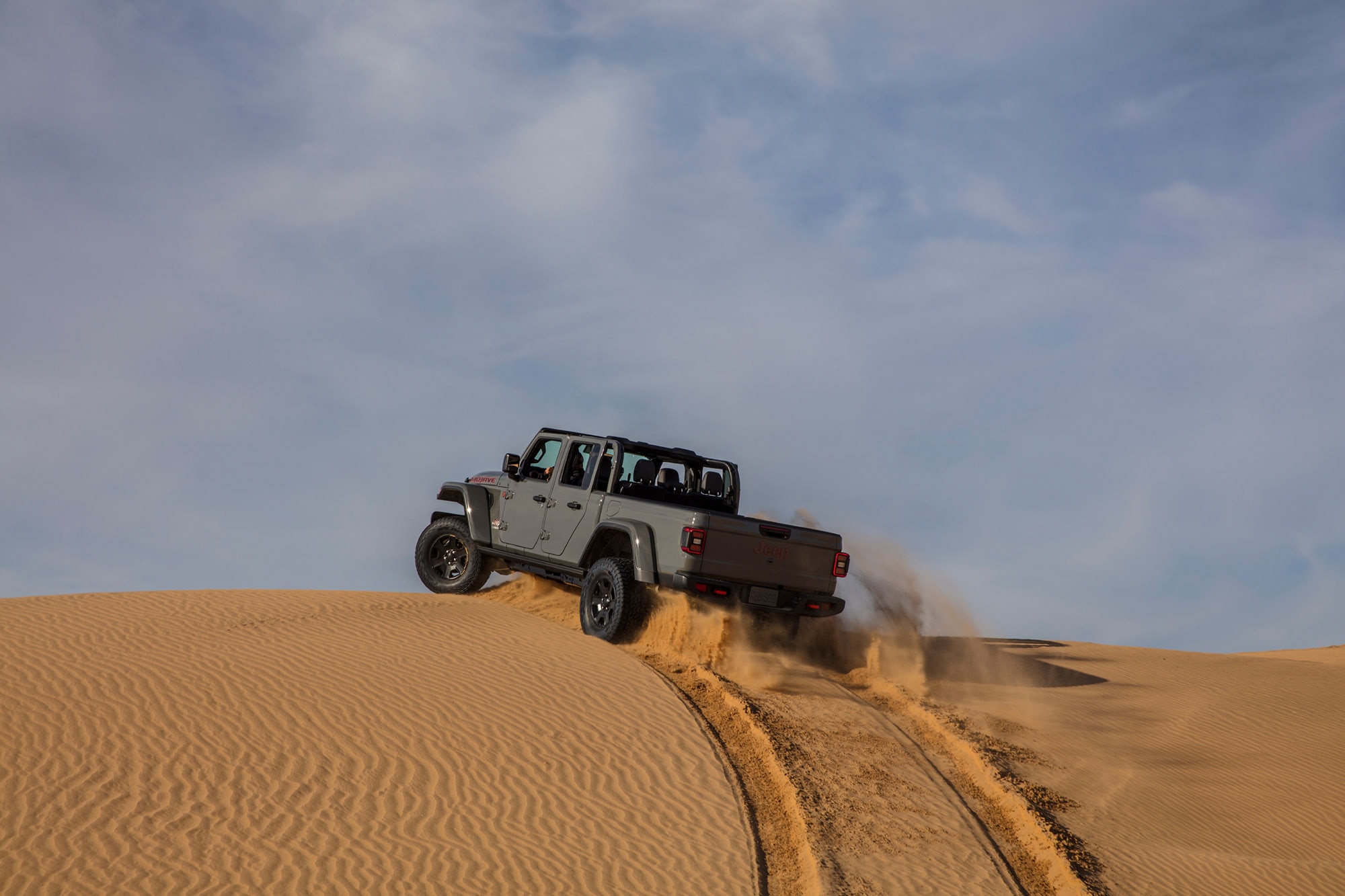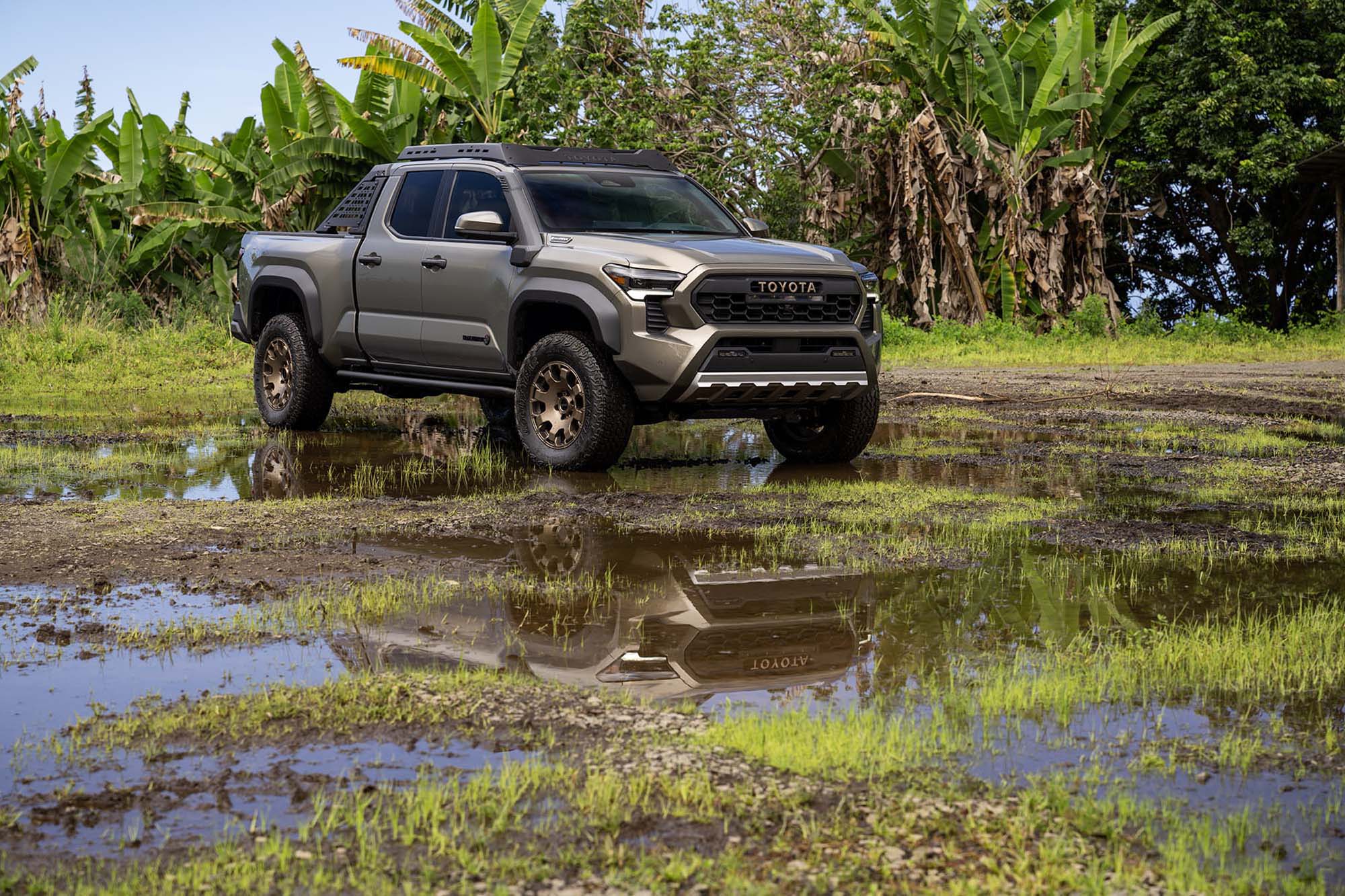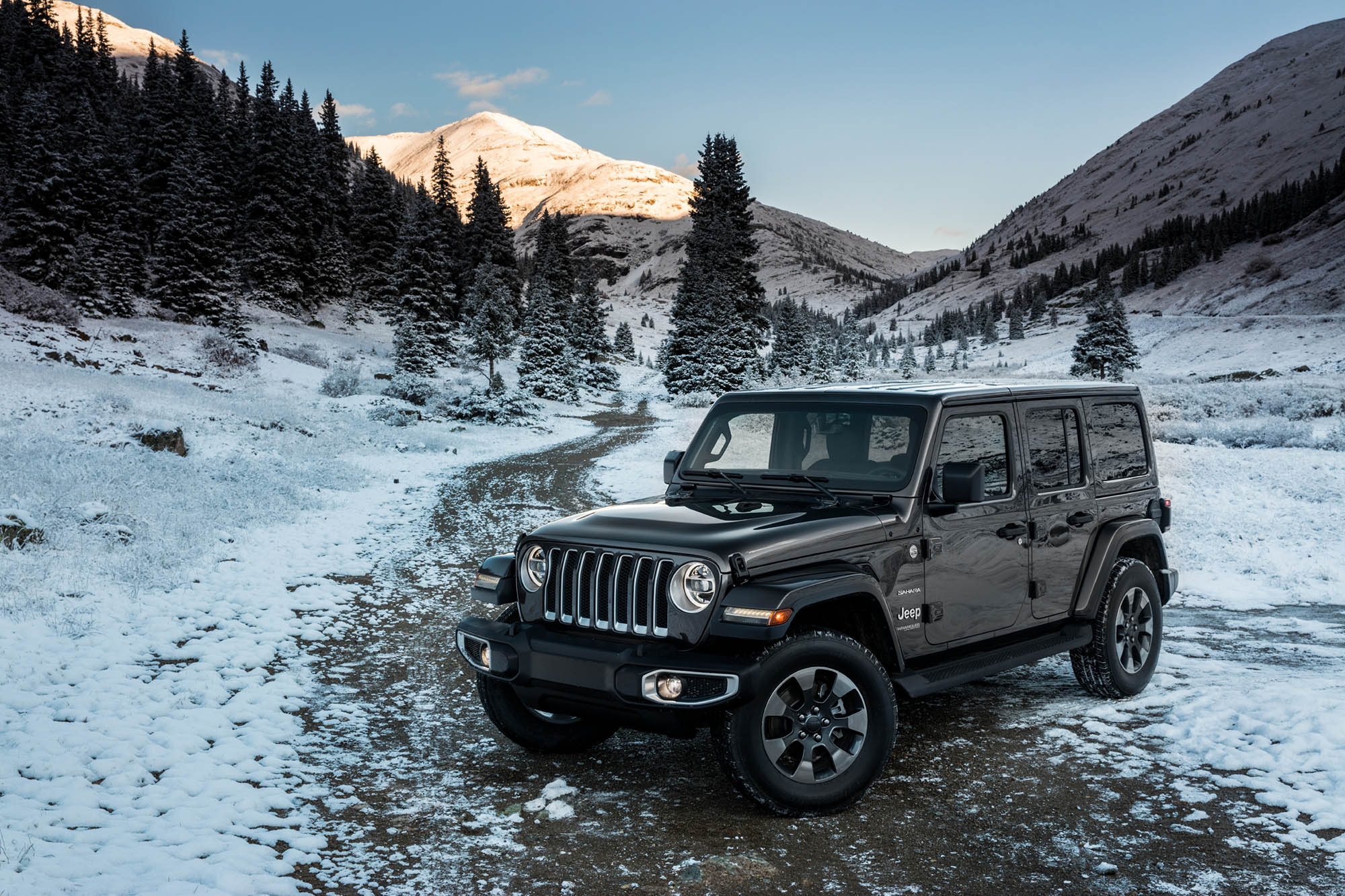What Is an Electronic Differential Lock?
This feature can be invaluable in snow or while off-roading.
 Toyota
Toyota
You've parked your car in an icy parking lot with one wheel on the dry pavement and the other on a patch of ice. You try to back out and find that the tire on the slippery stuff just spins and spins, while the tire on the asphalt does nothing. You, my friend, likely have an open differential. If you want to avoid similar situations in the future, it's worth considering an electronic locking differential.
 Jeep
Jeep
Unless Locked, a Differential Allows Wheels to Spin at Different Speeds
In front-wheel-drive cars, a differential is positioned between the front wheels. A rear-wheel-drive car, on the other hand, has its differential between the rear wheels. An all-wheel- or four-wheel-drive car will have both front and rear differentials.
Differentials allow the wheels to spin at different speeds. That's good for cornering but, generally speaking, bad for driving in snowy conditions or while off-roading. In these situations, a locking differential is invaluable.
One of the most common kinds of locking differentials is known as an e-locker, or an electronic locking differential. An e-locker allows the differential to operate as an open differential, with wheels free to spin at different speeds — until, that is, the driver chooses to lock them up and force them to spin at the same speed.
When found in rear-wheel-drive trucks and SUVs, a locking differential is often placed in the rear, although some vehicles have front lockers as well. If drivers anticipate conditions where a tire might slip or come off the ground — off-road trails with large rocks, for example — they can flip a switch to engage the electronic differential locker for maximum traction.
The same principle works in that icy parking lot scenario. With both tires locked into the same speed, the tire on the dry pavement will receive some torque and allow the car to move through the icy patch.
 Toyota
Toyota
Most E-Lockers Require Slowing to a Near Stop to Engage
There are a few drawbacks with e-lockers, however. Most require the driver to slow to a near stop before locking up. That means the driver has to plan ahead and engage the e-locker before it's needed. Otherwise, the driver will have to stop to lock up right before attempting the obstacle. This loss of momentum may mean simply swapping lack of traction for another problem: lack of movement.
Experienced drivers, however, are likely to appreciate that the e-locker is selectable, as that gives them more control over when to use it. There are some lockers that use sensors to lock up automatically when the computer deems it necessary. This type of locker can often be found in trucks and SUVs, such as those from General Motors.
 Jeep
Jeep
A Selectable E-Locker Isn't an Electronic Limited-Slip Differential
As of publication, selectable e-lockers are available in the Jeep Wrangler and Gladiator, Ford Bronco and Raptor, and Toyota Tacoma, to name just a few.
Keep in mind, though, that an e-locker is not the same as an electronic limited-slip differential. Such a differential simply uses the computer to help mitigate wheel spin. It's not as robust as an e-locker, and it can't provide a total lock.
Written by humans.
Edited by humans.
 Emme Hall
Emme HallEmme Hall loves small convertibles and gets out to the canyons in her 2004 Mazdaspeed Miata whenever she can. You can also find her in the dirt in her lifted (yes, that's right) 2001 Mazda Miata, or racing air-cooled Volkswagens in races like the Baja 1000. She's taken first place twice in the Rebelle Rally — once driving a Jeep Wrangler and then a Rolls-Royce Cullinan the second time. She was also the first driver to take an electric vehicle to the Rebelle Rally when campaigning the Rivian R1T to a top-five finish.
Related articles
View more related articles